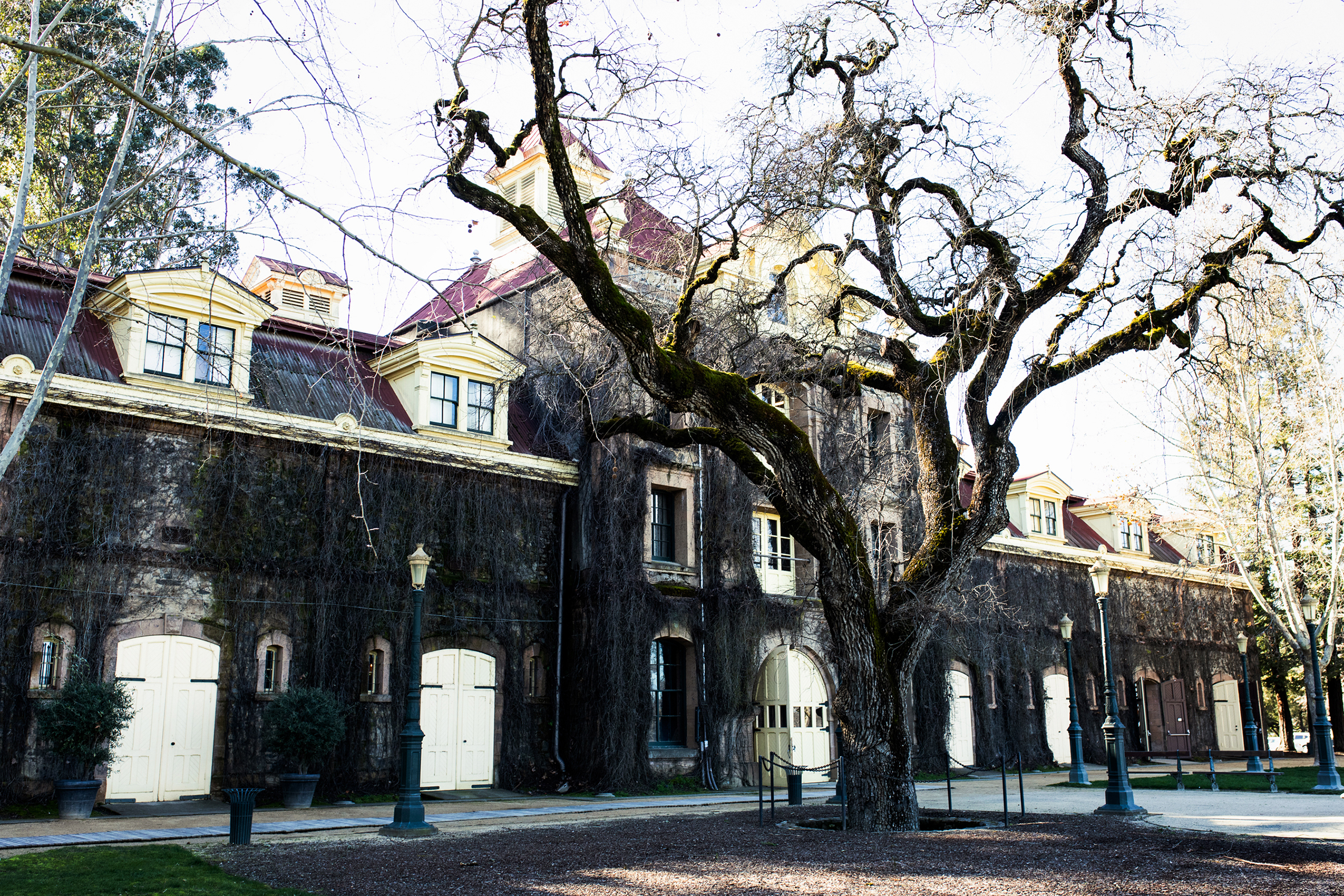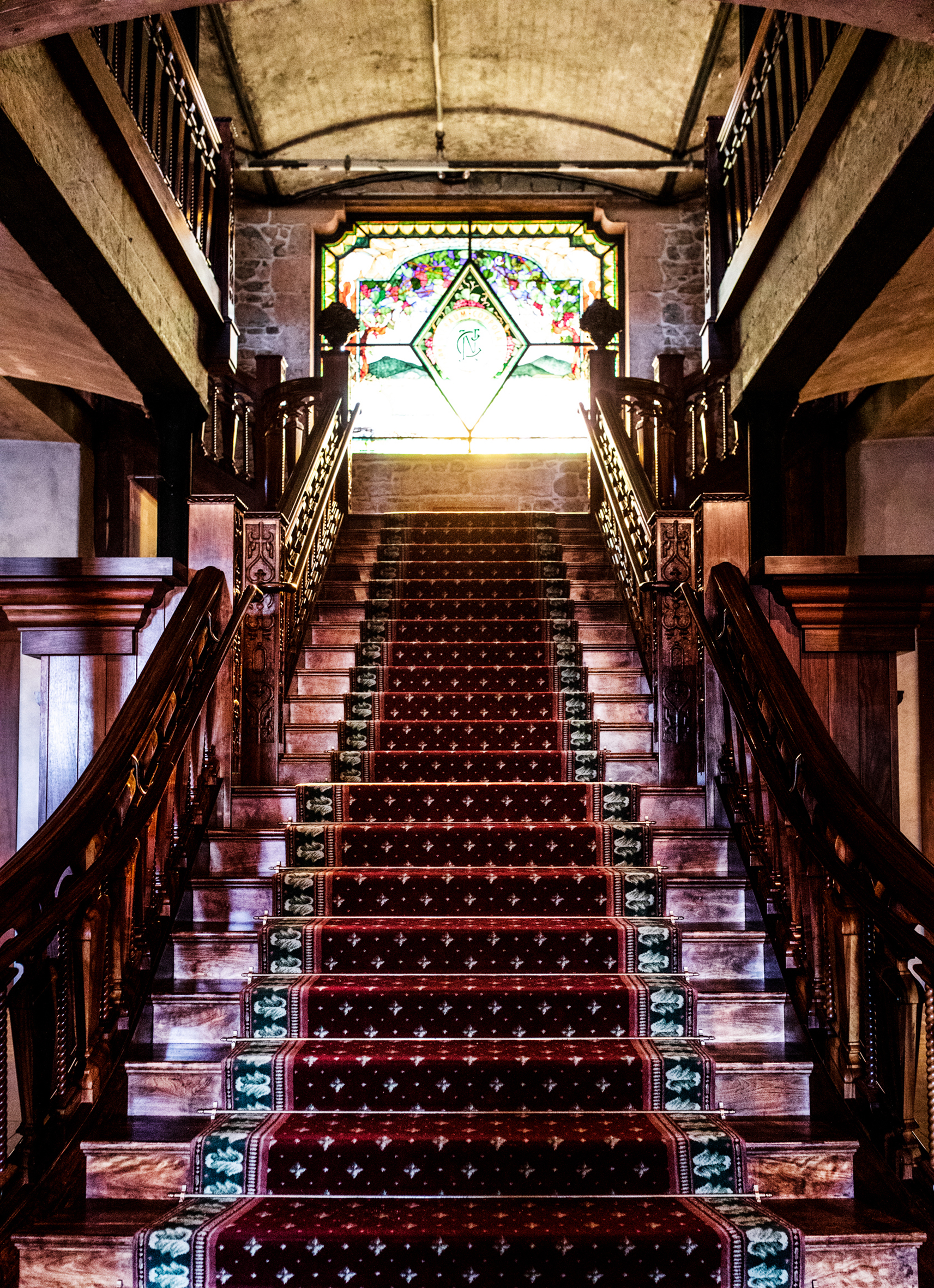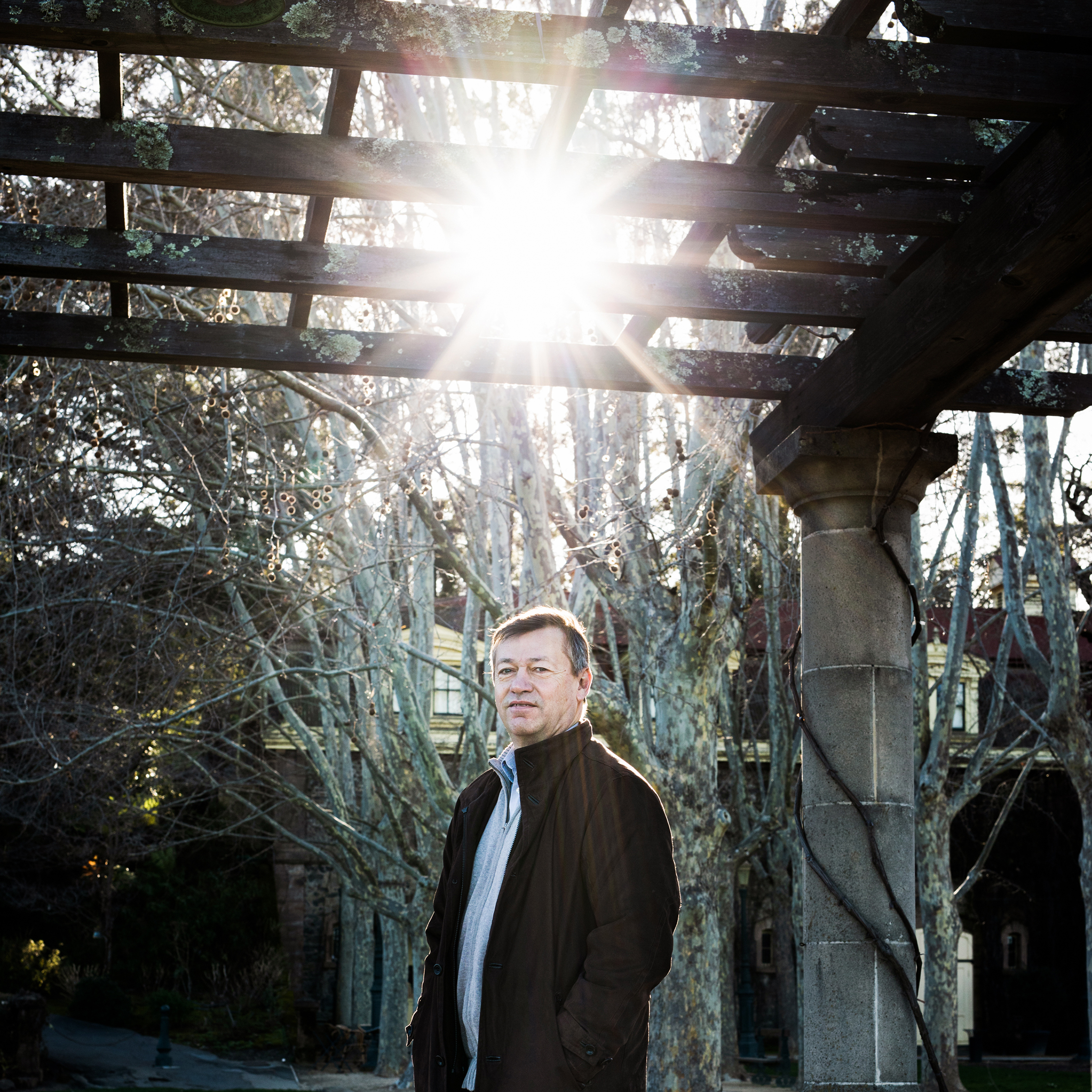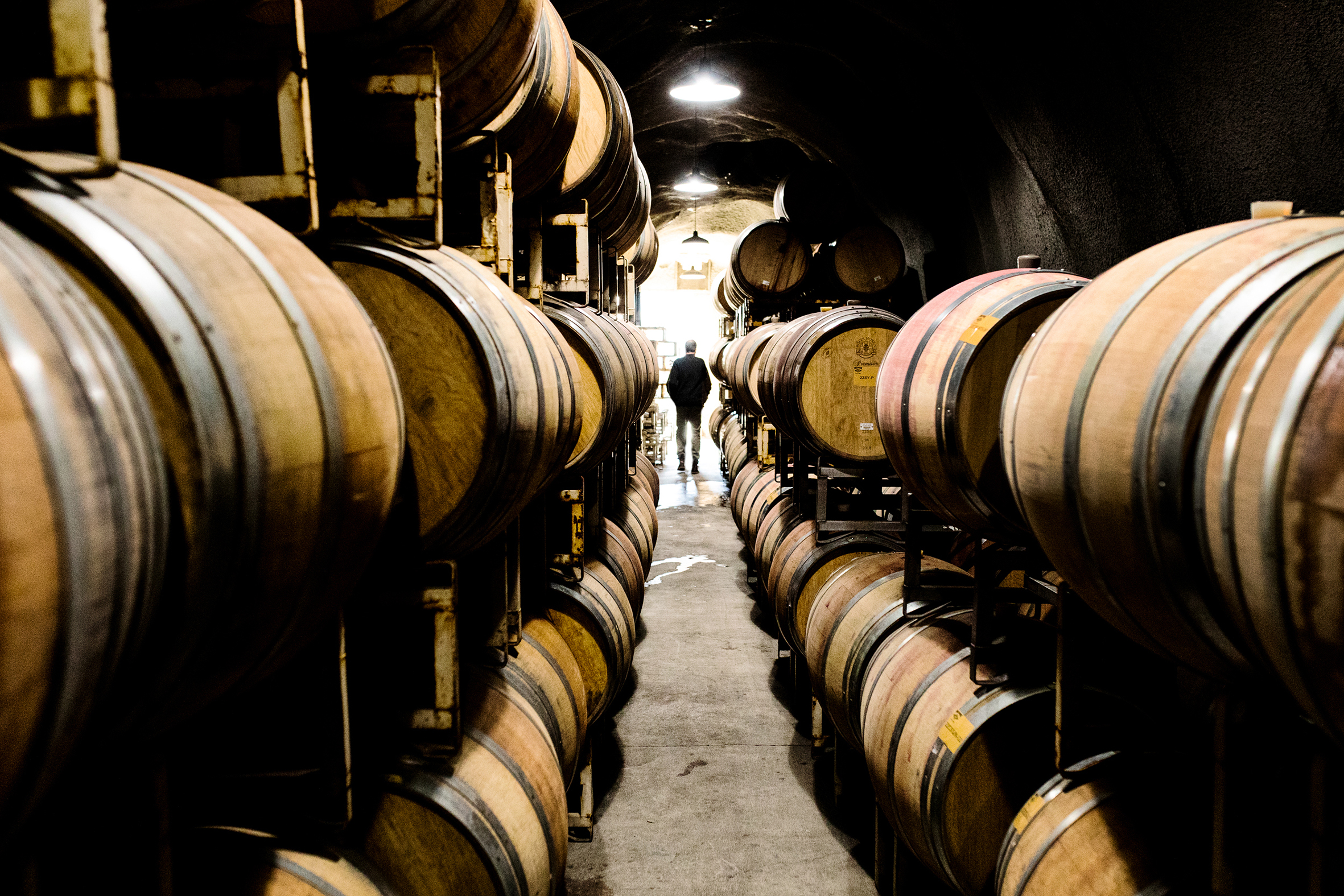22nd Jun 2023
“When Francis Ford Coppola came to me in 2011, he said he wanted me to make a drinkable wine, a wine that is not too heavy,” said Philippe Bascaules, who is now the director of winemaking at Inglenook, while maintaining his position as managing director at one of Bordeaux’s hallowed first growths: Château Margaux. “This was his vision. To return to the lighter, fresher Inglenook styles of before.”

Enlightened
One of Napa Valley’s oldest wineries, Inglenook has been through several owners and its fair share of ups and downs since it was founded by Gustave Niebaum in 1879. After his death and the repeal of Prohibition, the property passed into the diligent hands of Niebaum’s grandnephew, John Daniel, Jr., where it remained for over 30 years. Up until that point, Inglenook had an excellent reputation. And with good reason—the vineyard is mainly located in that sweet spot of the Rutherford bench, nestled between the foothills of the Mayacamas Mountains and the valley floor. Having tasted well-preserved bottles from the John Daniel, Jr. era, I’ve found Inglenook’s ability to hold its singular perfume for many years remarkable.
Then, due to financial pressures in the 1960s, the Inglenook estate had to be broken up. In 1964, John Daniel, Jr. sold off the heart of the property—the original winery, nearly 100 acres of vines, and the brand name—to United Vintners, which, soon after, was bought by a corporation, Heublein, Inc. After John Daniel, Jr. died, the portion of the estate he’d kept—the original house and 1500 acres of surrounding land—was sold to a young, successful film director with a passion for wine: Francis Ford Coppola. When Francis and his wife Eleanor discovered the history of what they’d purchased, they vowed they would one day reunite the property.



Meanwhile, Inglenook’s name and reputation were exploited by its corporate owners.
The label was used to front lower-quality wines, most of which had nothing to do with the vineyard or Napa Valley. Heublein was bought and sold, eventually landing in the hands of Canandaigua Wine Company, which would later morph into the industry giant Constellation Brands. In 1995, Canandaigua sold the Inglenook winery and surrounding land to Coppola, physically reuniting the estate but not the name. During this interim period without the Inglenook name, Coppola called the estate Niebaum-Coppola, followed by Rubicon Estate. In 2008, the Inglenook name was sold to another massive conglomerate: The Wine Group. A few years later, a deal would be reached between Coppola and The Wine Group for the purchase of the historic name.
It took the Coppolas nearly 40 years, yet true to their vow, they restored the estate—vineyard parcels, winery, and, finally, the Inglenook name, which they were able to buy in 2011.
Buying the name and trademark cost more than the entire estate. But it was an important milestone.
“We now have 235 acres planted to vines surrounding the estate,” said Philippe Bascaules as we sat to conduct a vertical tasting of every vintage of the estate’s flagship wine, Rubicon, made since he started. “Rubicon comes typically from the best part of the property, the Rutherford bench, behind the winery. 2012 was the first vintage for me here. I didn’t want to change a lot in the beginning. It wasn’t until 2013 that I started to make changes, and then it was slow and continuous.”
I wasn’t a huge fan of the Rubicon style of the late 1990s and early 2000s. The wines tended to be of the overtly oaky, over-extracted, fruit-bomb, high-octane style that plagued some Northern California labels of this era. I can still find an element of this in the 2012 Rubicon I tasted recently, but from 2013, a new style is clearly emerging.
Philippe’s mission is the Holy Grail everyone is seeking nowadays in Napa: how to get flavor and phenolic ripeness at lower potential alcohol and produce lighter-bodied, more "drinkable" styles.
Climate Change has made this an even more insurmountable task, one which has even started to dog Bordeaux winemakers in recent vintages.


"This is the reason I wanted to come here, to accept this challenge."
“From the beginning, I knew I needed to pick early to make high-quality wine in a lighter style. But how could I do this? When I came here in 2012, I understood why everyone picks so late in Napa. It’s because it is not easy to get these grapes ripe here. The sugars may be high, but the grapes are not ripe. We need to avoid under-ripeness. So, we started by picking whatever was ripe early and then some other blocks we had to pick later. Then I thought about how I could get grapes from these parcels ripe earlier. Now, we use a bit more water for these areas and prune a little earlier. We trim to reduce the canopy, so these vines need less water and make less sugar. And we must avoid dehydration. When there is dehydration, you have to pick as fast as possible. As for the winemaking, reducing the extraction was key. With the increased amount of alcohol, the extraction is fast. And we’ve doubled the number of tanks we have. We now have 120 tanks! These are smaller, taller tanks with less skin-to-juice ratio. Now, we can harvest and vinify each parcel separately. Each tank is fully automated for pump-overs and thermoregulation. But then the danger to avoid is making wine from the office. We still have to be in the winery and taste the wine every day.”

One of the benefits of harvesting earlier in Napa is getting the jump on what has come to be known as “fire season.” This worked to Inglenook’s benefit in 2020.
“2020 was a small vintage,” commented Bascaules. “We had that rain in May, and then it got really dry. Fortunately, we had our fruit in before the Glass Fire. Still, the question was: do we make wine in 2020? We didn’t see any smoke taint in the analysis or the tasting. So, we decided to make a very small quantity. I’m happy we decided to make this and that we only made a little.”
I’m impressed with this 2020 Napa Cab—a comment I don’t make often or lightly.
Like other wineries that have been working towards earlier harvesting—Harlan Estate and Eisele Vineyard spring to mind—the 2020 Rubicon not only sidesteps the smoke taint issue, it also largely dodges the impact of the late-season heatwave. In fact, it is in line with other recent vintages that have benefitted from Bascaules’ subtle changes. How to sum up the effect of these changes? In a word: enlightened.
-
Article & Reviews by Lisa Perrotti-Brown MW
Photography by Svante Örnberg
See more work from Svante at svanteornberg.se by clicking here!

PRODUCERS IN THIS ARTICLE
> Show all wines sorted by scoreMore articles

Cathiard Vineyard New Releases
02nd May 2024
3 tasting notes

Bordeaux 2023 Preliminary Vintage Report and Reviews from Barrel
29th Apr 2024
56 tasting notes

2021 Bordeaux in Bottle and A Modest Proposal
24th Apr 2024
599 tasting notes

Pilcrow’s New Releases
18th Apr 2024
7 tasting notes
Show all articles